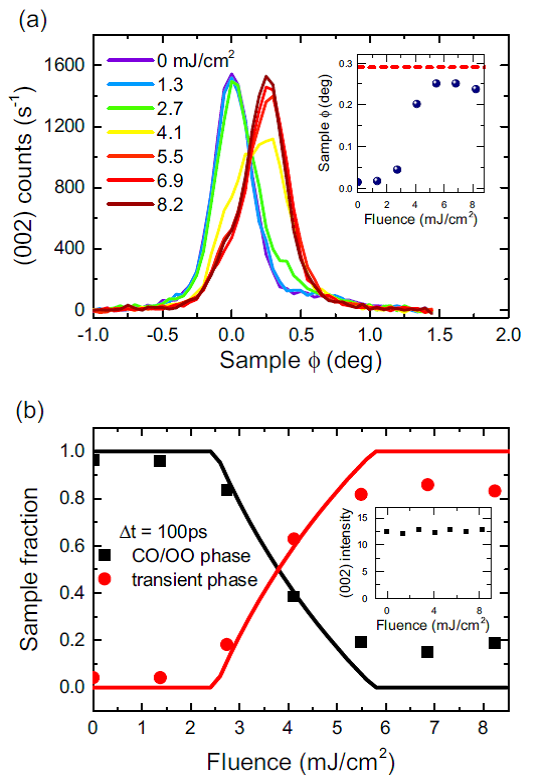Photoinduced transitions in magnetoresistive manganites: A comprehensive view
inset shows the fitted peak position as a function of fluence. The red dashed line indicates the position at Room temperature. (b) Fractions of each phase as a function of fluence at 100 K and 100 ps. The inset shows the integrated intensity of the peak as a function of fluence.
The excitation of charge-ordered manganites with near-infrared pulses induces a rich dynamical response, including the melting of charge order, the relaxation of structural distortions and the rearrangement of the spins. Using the FEMTO slicing source at SLS, we have studied the structural response during the photoinduced transition in Pr1-xCaxMnO3 thin films. By investigating the dynamics of both superlattice reflections and regular Bragg peaks, we disentangle the different structural contributions and analyze their relevant time-scales. Comparing these results with studies of the charge order and magnetic dynamics, a comprehensive picture of the phase transition is proposed, linked to a single critical fluence fc. For excitations below fc, the charge order and the superlattice are only partially suppressed and the ground state recovers within a few tens of nanosecond via diffusive cooling. When exciting above the critical fluence the superlattice vanishes within approximately half a picosecond followed by a change of the unit cell parameters on a 10 picoseconds time-scale. At this point all memory from the symmetry breaking is lost and the recovery time increases by many orders of magnitude due to the first order character of the structural phase transition. Finally while the melting of the charge order and the disappearance of the superlattice are continuous with fluence, the deformation of the unit cell displays a threshold behavior, which is similar to that found for the emergence of ferromagnetic correlations.
